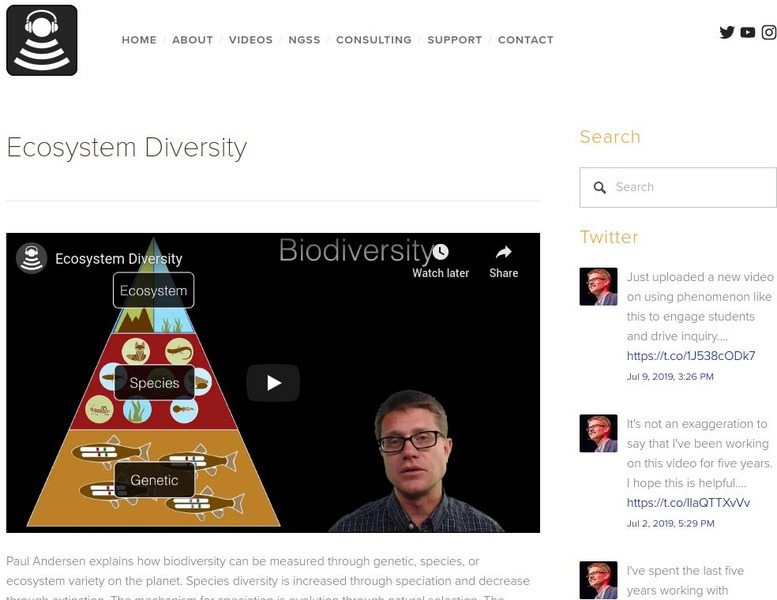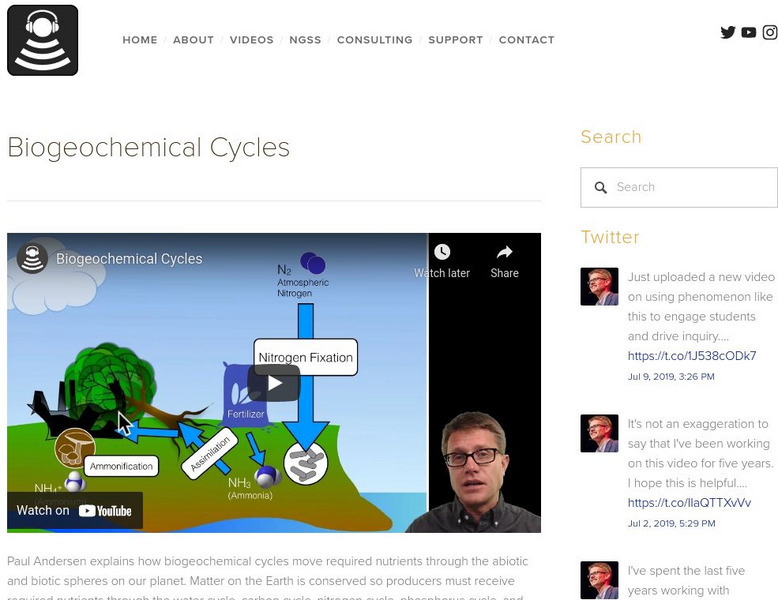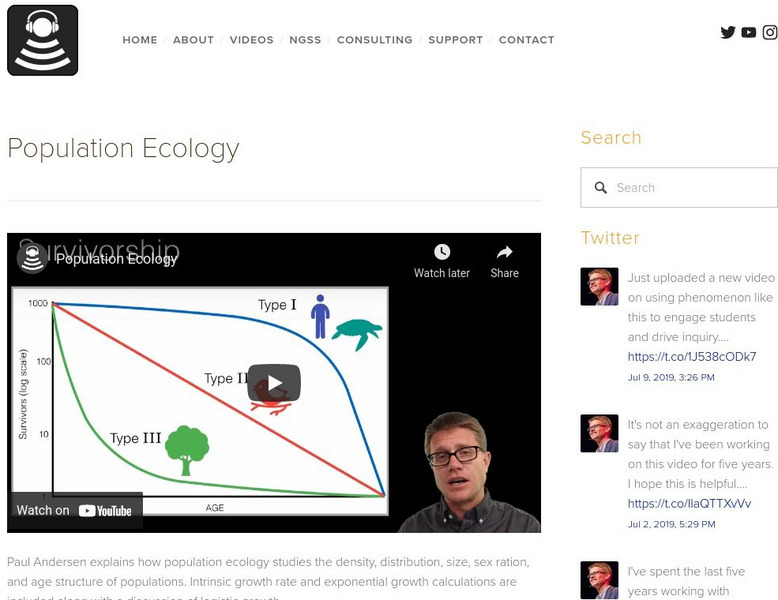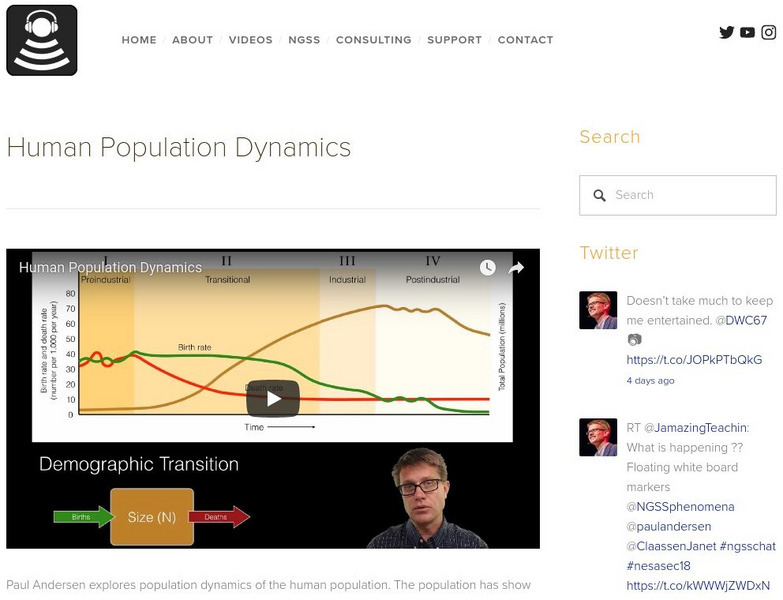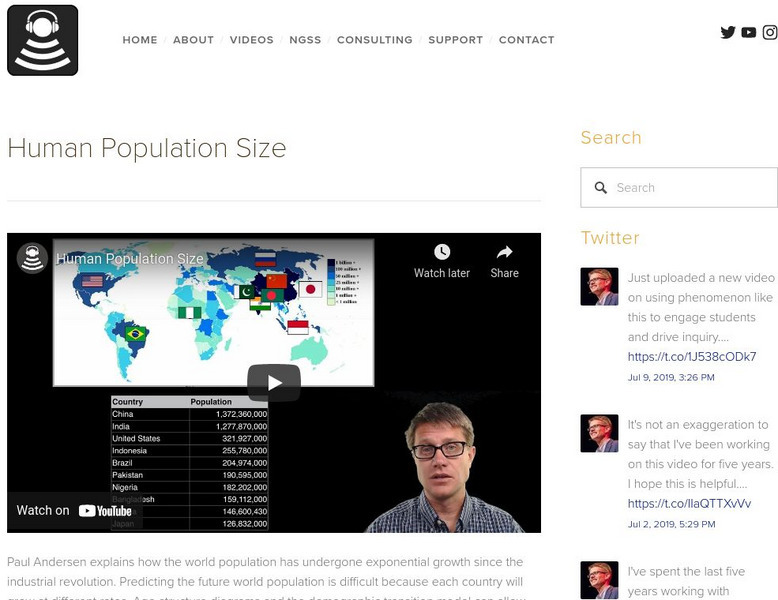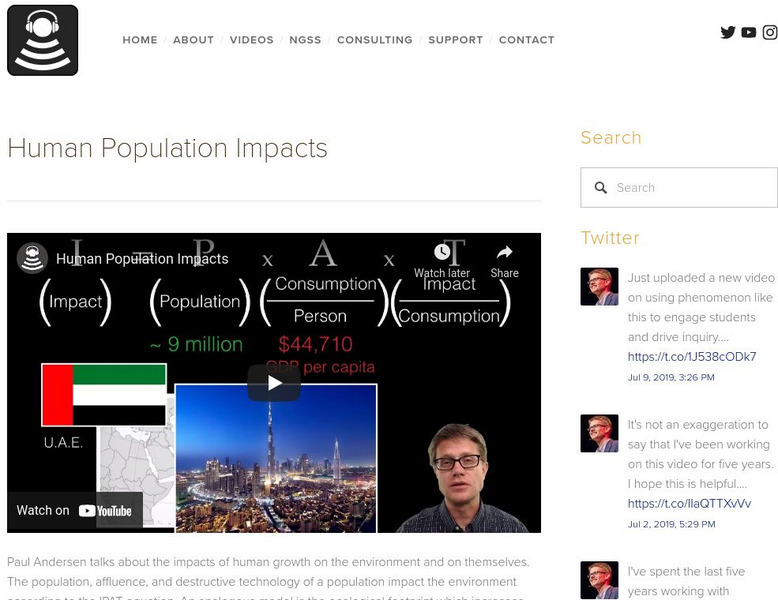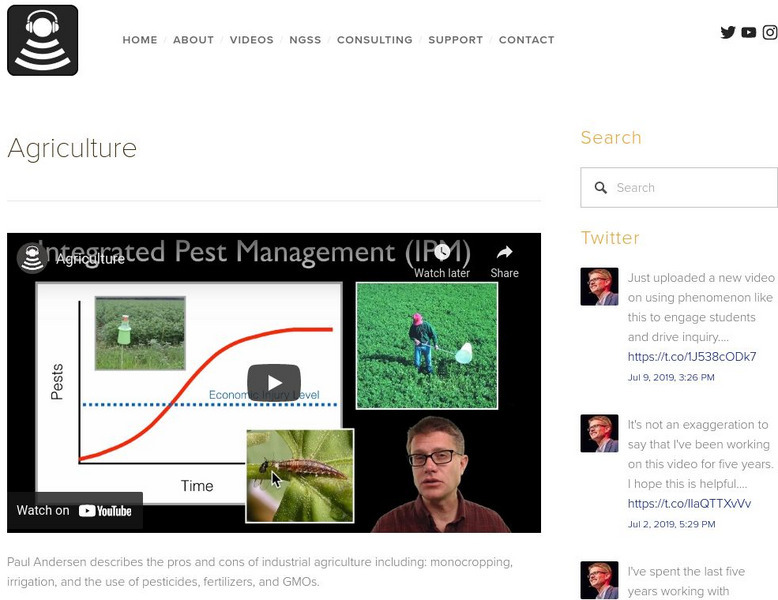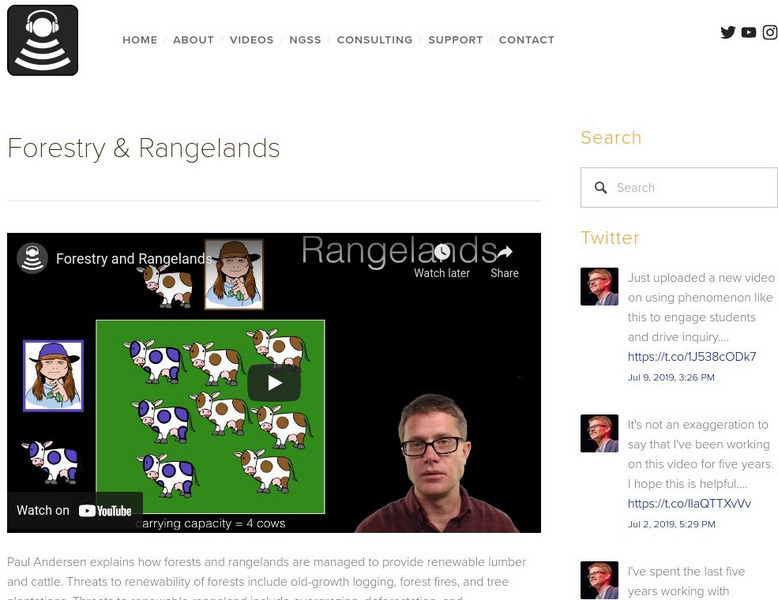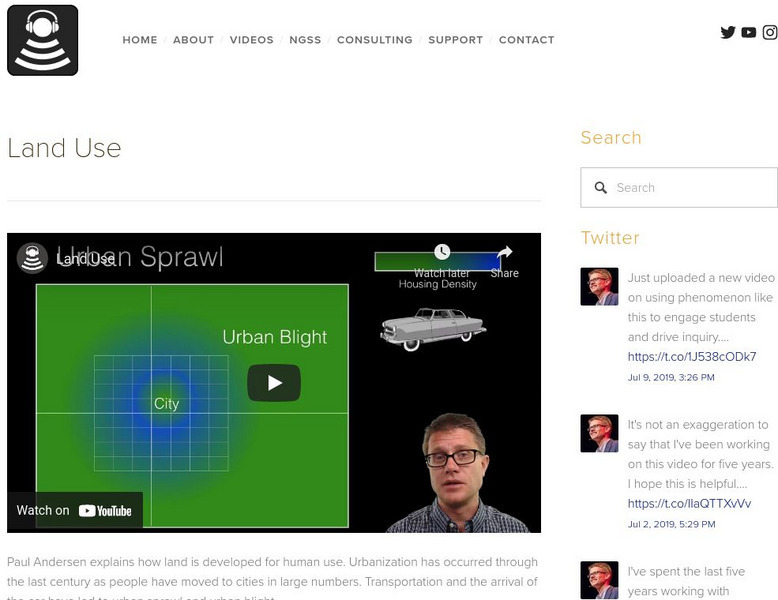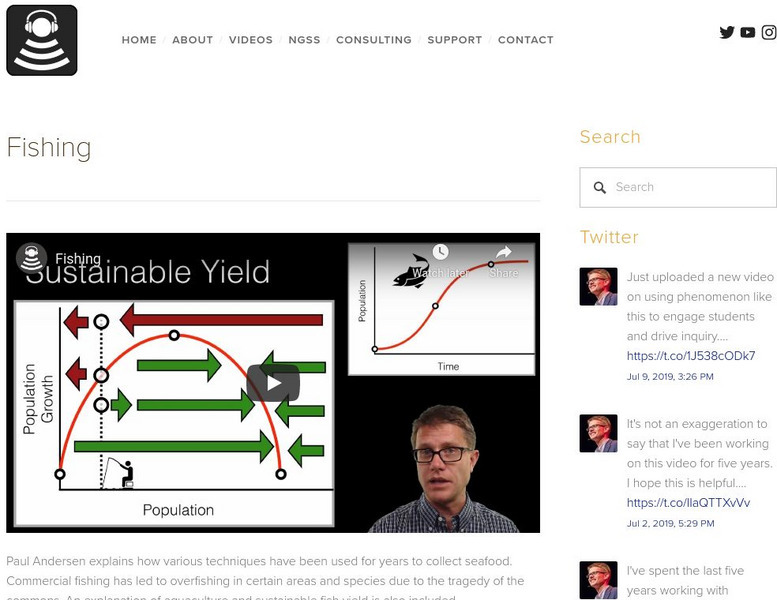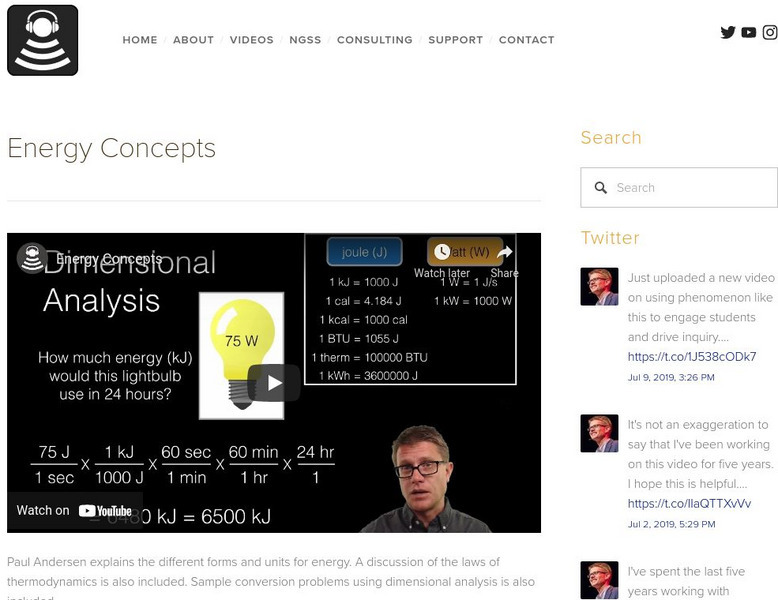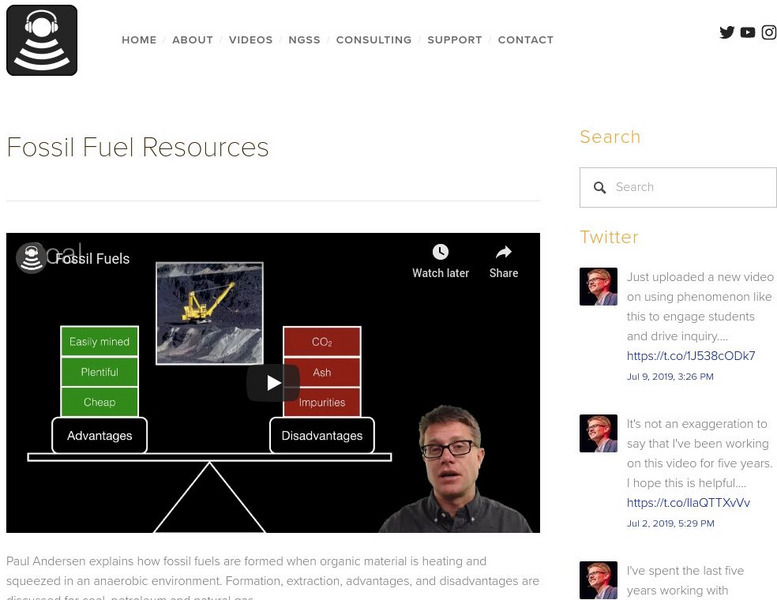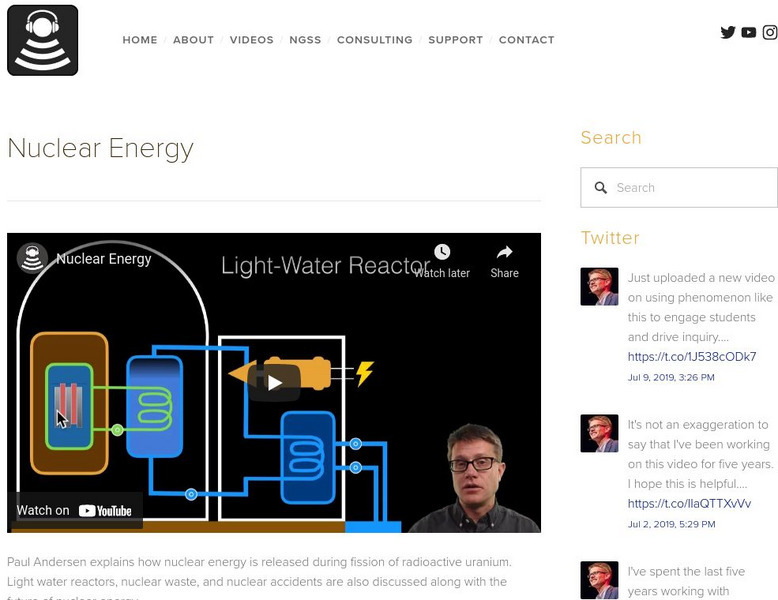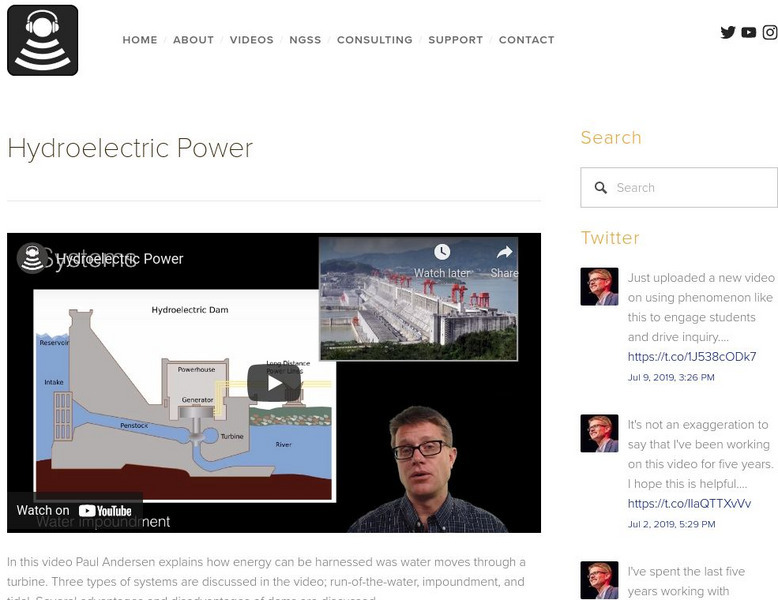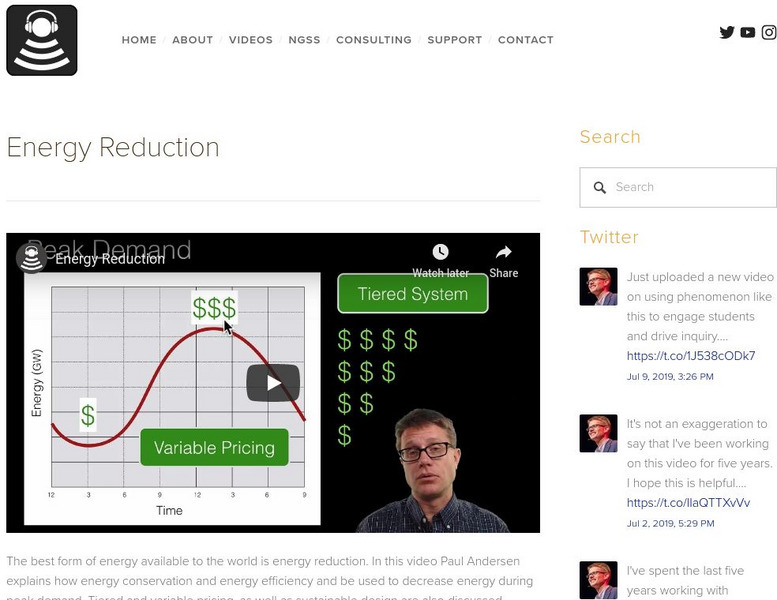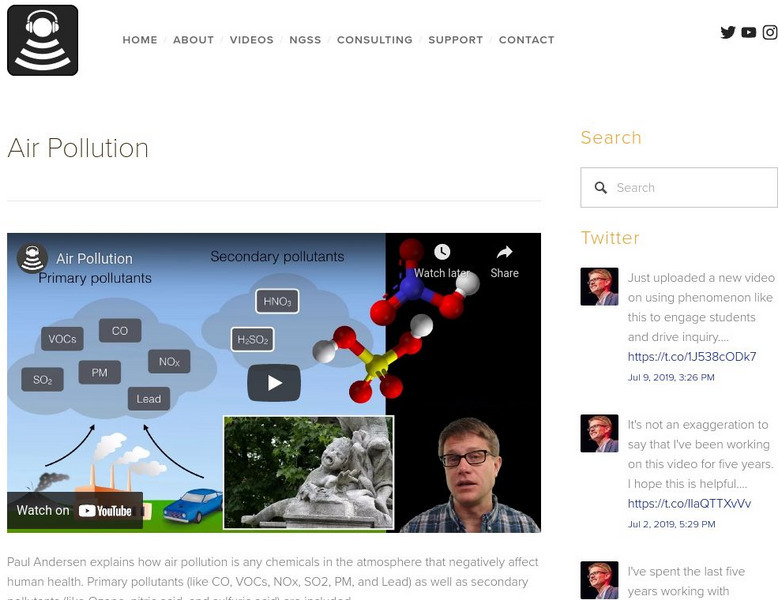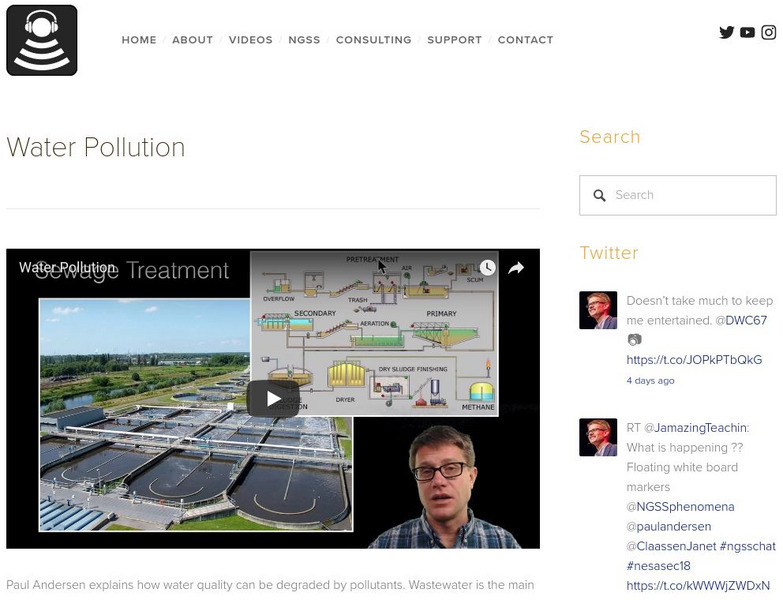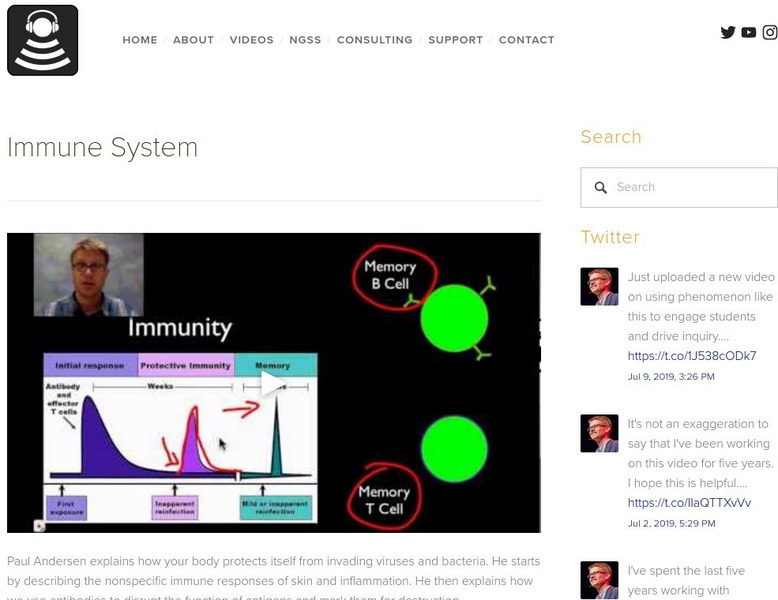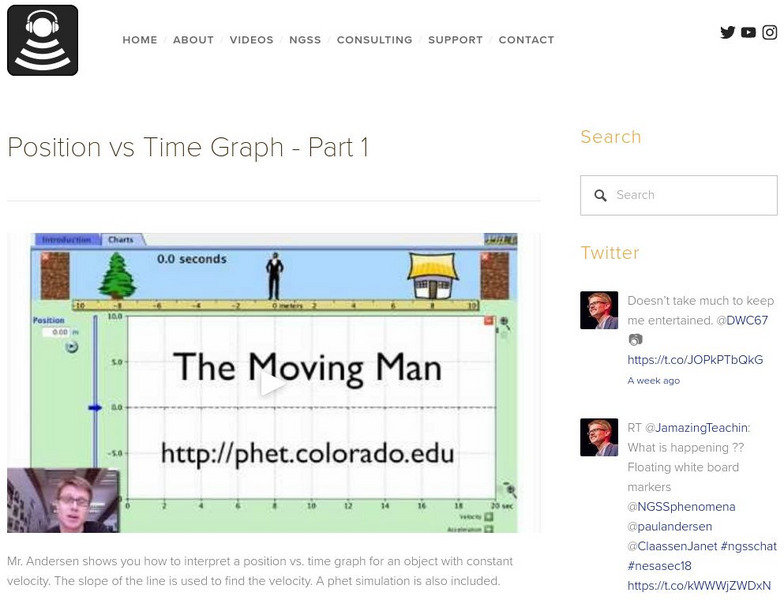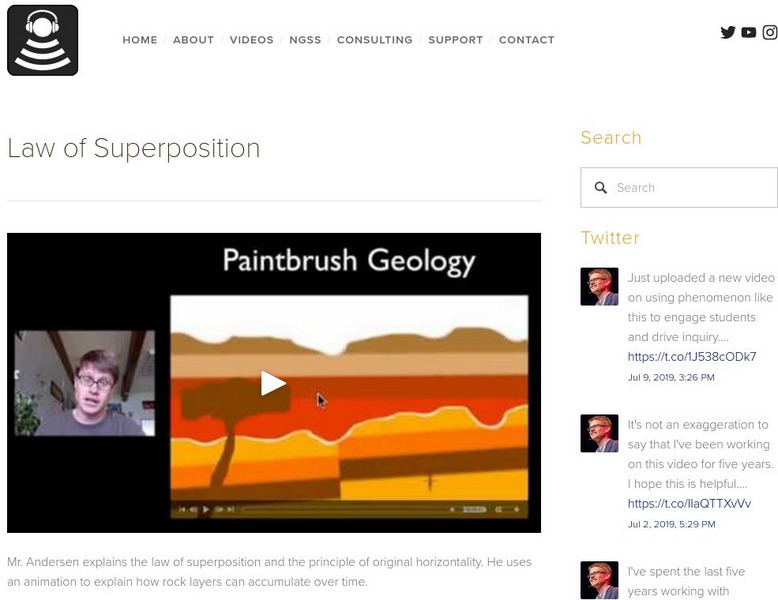Bozeman Science
Bozeman Science: Ecosystem Diversity
Paul Andersen explains how biodiversity can be measured through genetic, species, or ecosystem variety on the planet. Species diversity is increased through speciation and decrease through extinction. The mechanism for speciation is...
Bozeman Science
Bozeman Science: Biogeochemical Cycles
Paul Andersen explains how biogeochemical cycles move required nutrients through the abiotic and biotic spheres on our planet. Matter on the Earth is conserved so producers must receive required nutrients through the water cycle, carbon...
Bozeman Science
Bozeman Science: Population Ecology
Paul Andersen explains how population ecology studies the density, distribution, size, sex ration, and age structure of populations. Intrinsic growth rate and exponential growth calculations are included along with a discussion of...
Bozeman Science
Bozeman Science: Human Population Dynamics
Paul Andersen explores population dynamics of the human population. The population has show exponential growth since the industrial revolution and all countries will eventually move through the demographic transition. [11:14]
Bozeman Science
Bozeman Science: Human Population Size
Paul Andersen explains how the world population has undergone exponential growth since the industrial revolution. Predicting the future world population is difficult because each country will grow at different rates. Age-structure...
Bozeman Science
Bozeman Science: Human Population Impacts
Paul Andersen talks about the impacts of human growth on the environment and on themselves. The population, affluence, and destructive technology of a population impact the environment according to the IPAT equation. An analogous model...
Bozeman Science
Bozeman Science: Agriculture
Paul Andersen describes the pros and cons of industrial agriculture including: monocropping, irrigation, and the use of pesticides, fertilizers, and GMOs. [9:25]
Bozeman Science
Bozeman Science: Forestry and Rangelands
Paul Andersen explains how forests and rangelands are managed to provide renewable lumber and cattle. Threats to renewability of forests include old-growth logging, forest fires, and tree plantations. Threats to renewable rangeland...
Bozeman Science
Bozeman Science: Land Use
Paul Andersen explains how land is developed for human use. Urbanization has occurred through the last century as people have moved to cities in large numbers. Transportation and the arrival of the car have led to urban sprawl and urban...
Bozeman Science
Bozeman Science: Fishing
Paul Andersen explains how various techniques have been used for years to collect seafood. Commercial fishing has led to overfishing in certain areas and species due to the tragedy of the commons. An explanation of aquaculture and...
Bozeman Science
Bozeman Science: Environmental Economics
Paul Andersen explains how economic models, like supply and demand, can be applied to environmental systems. The market forces will not protect environmental services until proper valuation and externalities are established. The wealth...
Bozeman Science
Bozeman Science: Energy Concepts
Paul Andersen explains the different forms and units for energy. A discussion of the laws of thermodynamics is also included. Sample conversion problems using dimensional analysis is also included. Utilize the practice problems and...
Bozeman Science
Bozeman Science: Fossil Fuel Resources
Paul Andersen explains how fossil fuels are formed when organic material is heating and squeezed in an anaerobic environment. Formation, extraction, advantages, and disadvantages are discussed for coal, petroleum and natural gas. [7:57]
Bozeman Science
Bozeman Science: Nuclear Energy
Paul Andersen explains how nuclear energy is released during fission of radioactive uranium. Light water reactors, nuclear waste, and nuclear accidents are also discussed along with the future of nuclear energy. [9:06]
Bozeman Science
Bozeman Science: Hydroelectric Power
In this video Paul Andersen explains how energy can be harnessed was water moves through a turbine. Three types of systems are discussed in the video; run-of-the-water, impoundment, and tidal. Several advantages and disadvantages of dams...
Bozeman Science
Bozeman Science: Energy Reduction
The best form of energy available to the world is energy reduction. In this video Paul Andersen explains how energy conservation and energy efficiency and be used to decrease energy during peak demand. Tiered and variable pricing, as...
Bozeman Science
Bozeman Science: Renewable Energy
Paul Andersen discusses the technology, advantages and disadvantages of six sources of renewable energy; biomass, hydroelectric, solar, geothermal wind, and hydrogen. He also explains how changes in the storage and flow of energy in our...
Bozeman Science
Bozeman Science: Air Pollution
Paul Andersen explains how air pollution refers to any chemicals in the atmosphere that negatively affect human health. Primary and secondary pollutants are included. [9:25]
Bozeman Science
Bozeman Science: Water Pollution
Paul Andersen explains how water quality can be degraded by pollutants. Wastewater is the main source of water pollution and can be measured using the BOD (biochemical oxygen demand). Dead zones, cultural eutrophication, disease, and...
Bozeman Science
Bozeman Science: Immune System
Paul Andersen explains how your body protects itself from invading viruses and bacteria. He starts by describing the nonspecific immune responses of skin and inflammation. He then explains how we use antibodies to disrupt the function of...
Bozeman Science
Bozeman Science: Ecosystem Dynamics, Functioning & Resilience
In this video, Paul Andersen explains how ecosystems respond to disruptions. Disruptions can cause changes in the number and variety of organisms. It can also lead to migration, extinction or even speciation. Ecosystems that have higher...
Bozeman Science
Bozeman Science: Position vs Time Graph Part 1
Mr. Andersen shows you how to interpret a position vs. time graph for an object with constant velocity. The slope of the line is used to find the velocity. A PhET simulation is also included. [12:19]
Bozeman Science
Bozeman Science: Skeletal System
Paul Andersen describes the important features of the skeletal system. He starts by comparing and contrasting endoskeletons and exoskeletons. He then explains how the human skeleton provides support, movement, storage, blood production,...
Bozeman Science
Bozeman Science: Law of Superposition
Mr. Andersen explains the law of superposition and the principle of original horizontality. He uses an animation to explain how rock layers can accumulate over time. [6:21]
